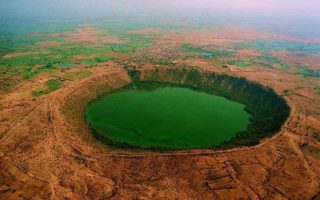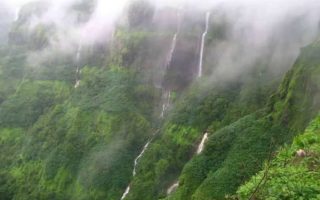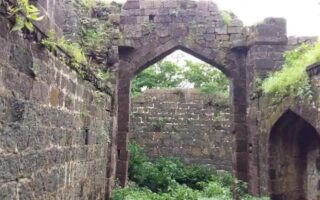There are several Maharashtra museums that form a part of the state’s art and Culture. There are as many as thirteen to fourteen museums which has a huge collection of items of art, craft and antique pieces. Some of them are under the supervision of Maharashtra Government while others are run privately.
These museums showcase history, culture and art of the state. They are the storehouses of several different types of coins, images, sculptures and tribal items. Not only this, paintings dating back to several thousand years are also under the possession of Maharashtra museums. Miniature paintings of Mughal period, European paintings, and exotic antique pieces from hilly areas of Nepal and Tibet are some of such artworks that are on display.
The rulers of the princely states of Maharashtra were well aware of the importance of the artistic heritage that needed to be preserved and protected from destruction over time. These rulers themselves were the connoisseurs of art and learned the art of museum building after getting inspired from their European contemporaries.
An important feature of Maharashtra museums is the preservation of manuscripts and written inscriptions that are several centuries old. An important aspect of these galleries of art that makes them distinguished from others is that they have art-works belonging to different civilizations and periods of history. There are sculptures from Mathura and Gandhara art, craft works from Buddhist and Jain Religions, and lavish architectural works belonging to Gupta Period.
Besides this there are some archeological and science museums that preserve specimen of different species of plants and animals. Some of them also showcase evolution of mankind and its multicultural aspects. Museums of Prince of Wales, Jehangir Nicholson, and Raja Dinkar are among the popular Maharashtra museums. Chhatrapati Museum, Tribal Museum, Taraporewala Museum are also famous among tourists.
Chhatrapati Museum
- Location: Kolhapur, Maharashtra
- Venue: New Palace
- Opening Hours: 9.30 in morning to 6.00 in evening
- Entry Fee: Rs. five
- Closing Days: Monday
- Category: History/Culture
- How to reach there: Chhatrapati Shahu Terminal, buses from Pune and Mumbai
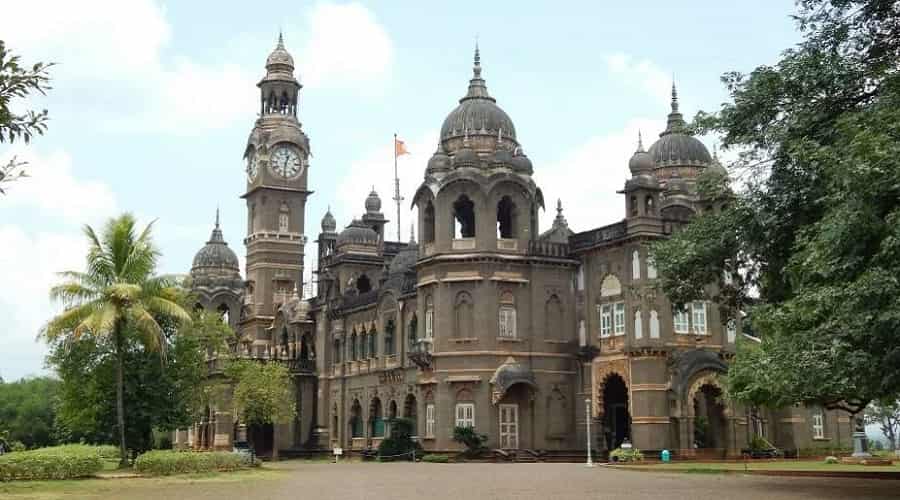
Chhatrapati Museum which is better known as Shahaji Chhatrapati Museum is located inside the New Palace in Kohlapur. The New Palace, constructed in nineteenth century by Ahilyabai, was the residence of Shahaji who died in 1983. The ground floor of the Palace is occupied by Shahaji Museum which has a vast collection of historical items.
Collections at Museum
The museum is the storehouse of the belongings and possessions of Shahaji. These include weapons, arms, artillery, guns, costumes and trophies. Several types of swords, shotguns, and clothes are also on display at the Chhatrapati Museum. The other items that complete the paraphernalia of items housed in this museum include heads of ferocious animals like tigers, bears, lion, panther, boar and black buck. Other memorabilia that is reminiscent of the colonial period is a letter from the then Viceroy. Works of embroidery, silver saddles, and other royal items adore the interiors of the museum.
Constructed in 1881, this exquisite museum is built in the Indo-Saracenic style and is a marvelous piece of architecture. Charles Mant was the main architect who designed this wonderful tourist attraction. There are several influences on the architecture of this museum including Rajasthani, Gujarati and Rajwada styles.
Other Attractions
The visitors of the Chhatrapati Museum can spend exploring the excavation remains of Brahmagiri. These are showcased at Town Hall which has displays like sculptures, coins, and works of sandalwood. The hall is supported by huge columns; the side walls are adorned with stained glasses that are decorated with the scenes from Shivaji’s life.
There is an Old Palace that is famous for the Temple of Bhawani, the goddess of Hindus. There are works of stone that make this temple an impressive building. A very old lake that goes by the name Rankala is another tourist attraction. There is a temple with the same name that is built at this Lake.
The museum is established amidst a picturesque backdrop of green parks and lake. Tourists can visit this extravagant royal place and have a feel of reminiscence of the bygone era. The place is a treat for lovers of history. One can spend memorable time at this majestic place and get an insight into the royal life style of the Maratha rulers.
Chhatrapati Museum is a magnificent structure that has attracted tourists for many years. Standing amidst the New Palace, the museum is a must-visit site for all those tourists who travel to Kolhapur. The historical charm of this place is a great rejuvenating experience.
Mahatma Gandhi Museum
- Location: Laburnum Road, Maharashtra
- Landmark: August Kranti Maidan
- Opening Hours: 9.30 in morning to 6.00 in evening
- Entry Fee: Nil
- Closing Days: National Holidays
- Category: History
- How to reach there: Buses and trains are available from all main cities
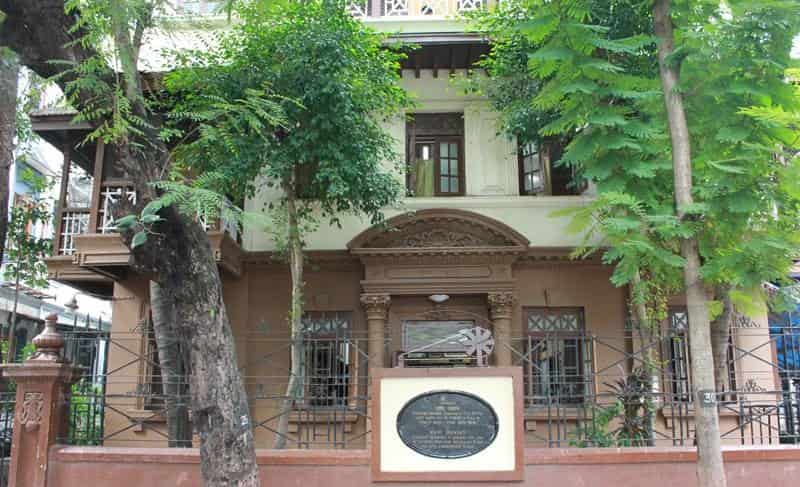
Mahatma Gandhi Museum is dedicated to the life and major events of Gandhiji’s life. The venue of the museum is the house of Revashankar who was an active freedom fighter. Not only this, it was also the venue for the frequent visits of Mahatma Gandhi in the years between 1917 and 1934. Mani Bhavan, as this building is generally called, was the host of a number of freedom movements like Civil Disobedience Movement, Swadeshi and Satyagraha Movements.
Highlights of the Museum
One of the main attractions of Mahatma Gandhi Museum is the Library that has a huge compilation of books related to the life of Gandhi, his ideologies, and history of Indian National Movement. The library is open to public on all days except Sundays.
There is a living room of Gandhiji which was his working place. It stores Charkha and Charpoy that were his prized possessions. An auditorium on the first floor is the sight of many visuals and films on his life. Several debates, discussions and competitions of students from schools and colleges are also held here from time to time. The recordings of his speeches create a nostalgic environment.
Besides this, there are various exhibitions that depict the life of this freedom fighter. Mini figures that are the result of efforts of Sushila Gokhale are attractions for the tourists. Mahatma Gandhi Museum is recognized as an institute that offers a Ph.D. degree to the interested students.
Ashram prayers that are from Bhajanavali are offered in morning and evening. The prayers are written in many Languages. A bronze plaque is a place in the museum where he used to offer prayers and was arrested during struggle for independence in 1932.
Mahatma Gandhi Museum is a perfect embodiment of this man’s life of simplicity and austerity.
Prince of Wales Museum
- Location: Mumbai, Maharashtra
- Address: 159-161, Mahatma Gandhi Road, Mumbai
- Opening Hours: 10.15 in morning to 5.45 in evening
- Entry Fee: Rs. five for adults, Rupee 1 for children, Rs. three for college students, free for students and children on Tuesday
- Closing Days: Monday
- Category: Archeology, History
- How to reach there: Buses and trains are available from all major cities.
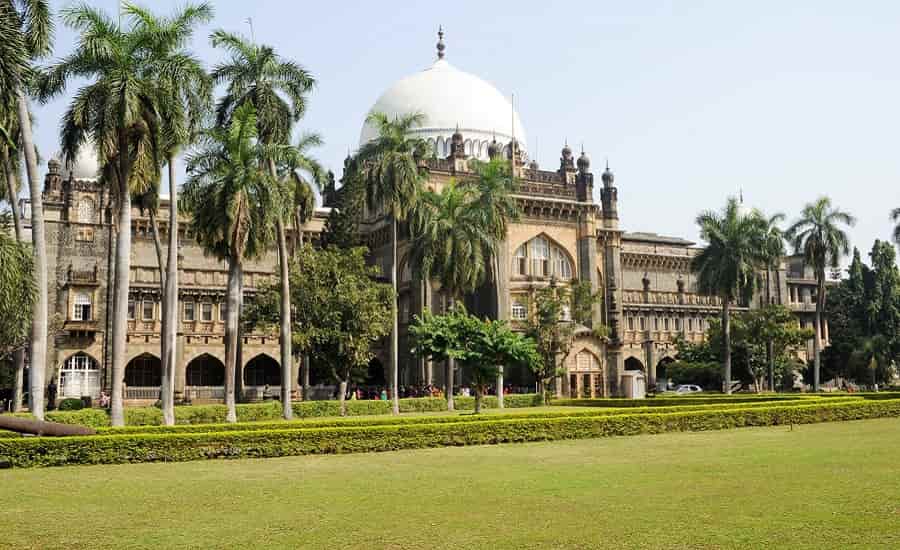
Earlier known by the name of Chhatrapati Shivaji Sangrahalaya, Prince of Wales Museum was established in 1905 by the then Prince of Wales – George V on one of his visits to India. Built on the design by George Wittet, this museum is one of the best museums.
The museum’s architecture is built in Indo- Saracenic style and is a combination of both the Moorish and Gothic styles. The artifacts belonging to Indus Valley Civilization adorn this museum that is divided into three sections namely natural History, art and Archeology. This grand museum also showcases relics belonging to splendid Gupta and Maurya periods. Some of the artworks of Nepali and Tibetan art have also found place in Prince of Wales Museum.
There are galleries that are dedicated to Buddhism tankha and Tibetan bronze works. The museum itself is made up of stones in yellow and blue. The other architectural works of which the museum is made up of are cupolas on towns, verandahs built in Rajputana styles, and arches influenced by Saracenic style. Protruding balconies and filial domes that are part of this massive piece of architecture have been influenced by Islamic art.
Highlights of the museum
There is a vast collection of more than 50,000 different artifacts. Apart from three main sections, there is a section dedicated to timbers of several kinds. Marvelous collection of fossil fuels and rocks dating back to an ancient era forms a part of Prince of Wales Museum.
Art Collection Section
Major schools of painting in India including Rajasthani, Mughal, and Deccani form the prominent features of this museum. There are several leaf-paintings that are on display. The other displays that attract the tourists are manuscripts belonging to the Mughal period. The Ivory section has a huge collection of artifacts dating back to the Gupta period. Metal ware, gold and silver ornaments, and textiles fill several parts of this section.
Archeological Section: The antique items including weapons and ornaments belonging to the Indus valley have been placed in the Prince of Wales Museum. There is also a vast collection of coins and weight and measures, some of which were transferred from Pune to Mumbai. There are beautiful sculptures, terracotta, and other excavation items that have remained parts of glorious civilizations of Indian history.
Natural History Section: This section consists of a specimen of several species of birds, reptiles, mammals and others. A twenty-foot saw fish exhibit is the major attraction of this part of the museum which was aided by the Bombay Natural History.
History of the Museum
The museum was built to honor the visit of Edward VII. A land by the name of Crescent Site was assigned and George Wittet framed the main design of the museum. Funded from several sources including Cowasji Jehangir, construction of Prince of Wales Museum was finished in 1915. The building was inaugurated in 1922 by the wife of George Lloyd.
Taraporewala Aquarium
- Location: Mumbai, Maharashtra
- Landmark: Marine Drive
- Opening Hours: 11.00 in morning to 8.00 at night on all weekdays. On Sunday, 10.00 in the morning to 8.00 at night.
- Entry Fee: Rs. 30
- Closing Days: Monday
- Photography: Not Allowed
- Category: Wild Life
- How to reach there: Buses and trains from all the major cities of India.
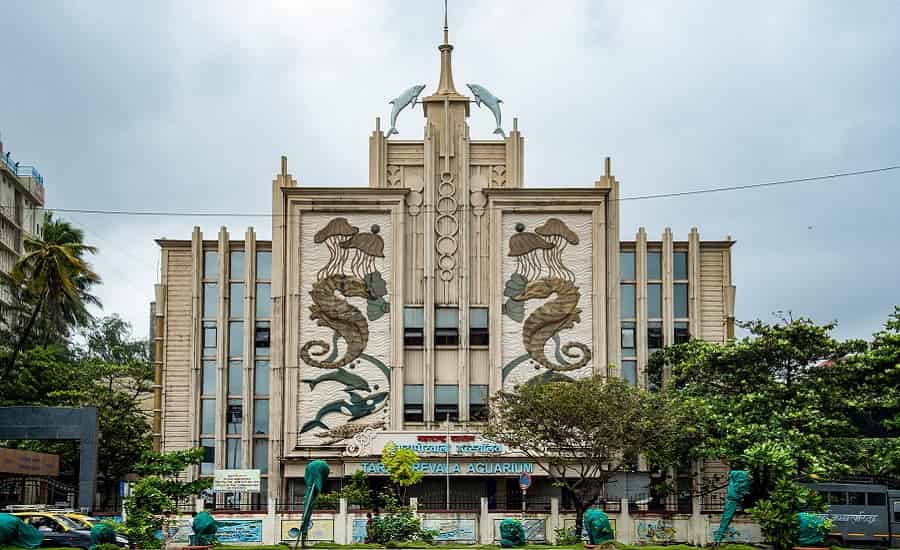
Taraporewala Aquarium is a large collection of marine animals including fish and other exotic species. The aquarium was inaugurated by first Indian President Rajendra Prasad in 1952. The place is a delight for enthusiasts of marine life. Extended over three rooms, it is one of the places that store some of the rare and exquisite pearl jewelry of the world. The aquarium has got its name from its philanthropic donator who contributed a whopping sum of Rs two lakh for its construction.
Highlights of the Aquarium
There are several different varieties of both freshwater and marine fish that catch the fancy of the tourists. The aquatic life consists of coral fish, rays, sea turtles and sharks. Varieties of moray eels and string rays are worth watching. There are in total seven breeds of coral fish at display that have been brought from Lakshadweep Islands.
The aquatic life at Taraporewala Aquarium offers a glimpse into the fish habitats of Indian Ocean and Arabian Sea. The place has been broadly divided into two main parts. These consist of displays covering 160 cubic feet and 2 cubic feet. The surroundings of this aquatic destinations offer maximum protection to fish life. In addition, these beautiful backdrops make the scenes charming and worth watching. Several measures have been taken to maintain the rare and exotic species like kite fish, sea horses etc. Several octopus species are also found at this exquisite water body. Sea flowers and worms form the prime attraction of this place.
Another section of Taraporewala Aquarium is dedicated entirely in order to preserve fossils and sea shells that are captivating to watch. There have been proposals to renovate this place into an underwater oceanarium with undersea walk facilities for the visitors.
Nearby Attractions
There are many attractions near Taraporewala Aquarium that are worth visiting. Mumbadevi temple is a sacred site that has an impressive statue of the goddess. Mahatma Phule Market has several stores that sell fruits, vegetables, and other eatables.
Coin Museum
- Location : Nasik, Maharashtra
- Venue : Anjneri Hill
- Opening Hours : 9.30 to 1.00 in morning and 2.00 to 5.30 in evening
- Entry Fee : None
- Closing Days : All Holidays including Sundays
- Category : Coins
- How to reach there: Buses from Mumbai and Pune. By train, Nasik Railway Station.
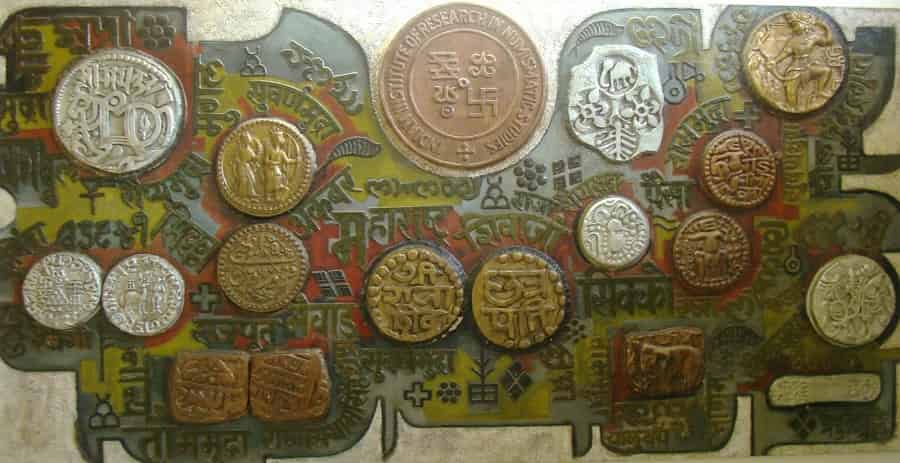
Coin Museum is the one of its own kind that was established in 1980 by I.I.R.N.S. which is an institute dealing in study of numismatics. This museum has a huge collection of coins and currencies form all over India. Established in the scenic backdrop of Anjneri hill, this museum has records of the entire timeline of Indian currency system.
Highlights of the Museum
The museum showcases the History of the currencies; it provides an excellent opportunity for those who are enthusiastic in knowing about the process about manufacturing of coins. Coin Museum has visual displays that help a visitor know about the processes of mining, minting and casting of coins.
Besides coins, the other items that are on display inside this unique museum are moulds, images, and dyes. All these items are used in manufacturing of coins at one step or the other. Not only this, several historical artifacts, terracotta and other materials used in manufacturing of numismatic objects help the tourists gain information on the notes and coins.
There is a huge index of cards that are used as references while searching information about some particular coins. The number of theses cardexes exceeds one lakh. Workshops are organized from time to time by the authorities of Coin Museum to promote art of numismatics among masses. The museum has become a hub for study and research of Indian coins. The extensive archive of coins has remained a source of attraction for the foreign tourists.
Museum Of Arthropoda
- Location: Pune, Maharashtra
- Opened in: 1961
- Famous for: Joined legged animals
- How to reach there: Buses, trains, and planes are available from all the major cities
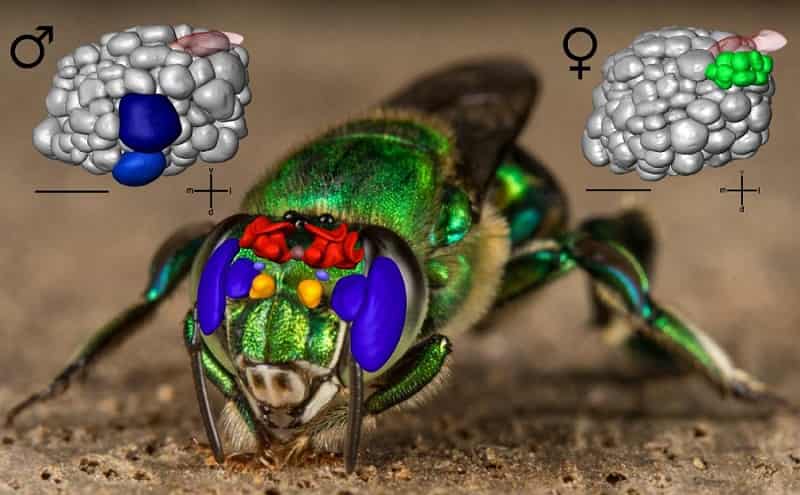
Museum of Arthropoda is located in Pune which is the center of art, craft, and culture. It is a delightful place for connoisseurs of art enthusiasts. Pune, being the multifaceted cultural city, has remained a cultural hub for decades. Its traditional distinctiveness attracts thousands of tourists every year. The Arthropoda museum is another feather in its cap. It is the perfect place for animal lovers and those who want to dig into the details about nature and its inhabitants.
Museum of Arthropoda is a unique place in itself. It is the abode of astonishing joint-legged animals. Exploring about the habitats and ecosystems of these unique species of animals can be a marvelous experience. One gets to know more about them, their habitats, their role in nature, and measures of protection. This museum of natural History houses a myriad of multiple legged animals like prawns, lobsters, insects, beetles, cockroaches, and several other varieties of millipedes and centipedes. Their crawling movements, flexible body shapes, and small sizes are interesting to note.
These joined legged animals form the largest species in the world. Not only this, these insects play a vital role in ecosystem and maintaining life cycle. A number of other animals that lie high in the hierarchy of pyramid of life cycle are dependent on these leggy creatures, either directly or indirectly. Some of them play a vital role in cleansing by feeding on harmful products; some other play a significant role in providing nutrients to the soil.
Museum of Arthropoda was the brainchild of S.M. Ketkar. Since his college days, he had an avid interest in collecting several species of Arthropoda. His huge collection, soon found a place in this museum. These unique animals have been categorized thoroughly and arranged in order of their classes. Crustaceans, Arachnida, and Insects, and Myriapoda are some of these classes into which they are organized.
Significance of Museum
The museum is important from the point of view of research, and scientific studies. It is also a hub of several educational and informative competitions where several zoology students come every year in order to keep themselves abreast of the valuable information available here. The museum even arranges for a short course in entymology and organizes nature tours for the sake of college students. School students also visit the place frequently. One can understand the significance of Arthropoda in the fields of agriculture, medicine, and other industries. In fact, in the absence of these unique species, the biological balance of nature will be disturbed; their role as natural scavengers cannot be under-estimated.
The museum is a storehouse of several species of beetles including boll weevil, net winged beetle, tumblebug, green june beetle, oil beetle, tortoise beetle, locust, giant stag, red-headed borer, dung beetle, firefly, burying beetle, and brown paranoid. Among the exotic varieties, the common ones are Darwins beetle, jewel beetle, violin beetle, and giraffe weevil.
This museum is one of its own kinds; it is a popular site-seeing place of Pune.
Raja Dinkar Kelkar Museum
- Location: Pune, Maharashtra
- Address: 1377-78, Shukrawar Peth, Pune
- Landmark: Abhinav Kala Mandir
- Opening Hours: 10.00 in morning to 5.30 in evening.
- Entry Fee: Rs.50 for Indians, Rs.200 for Foreigners
- Closing Days: Government Holidays
- Approximate Time to Visit: About half hour
- Category: History/Culture
- How to reach there: Buses and trains are available from all major cities.
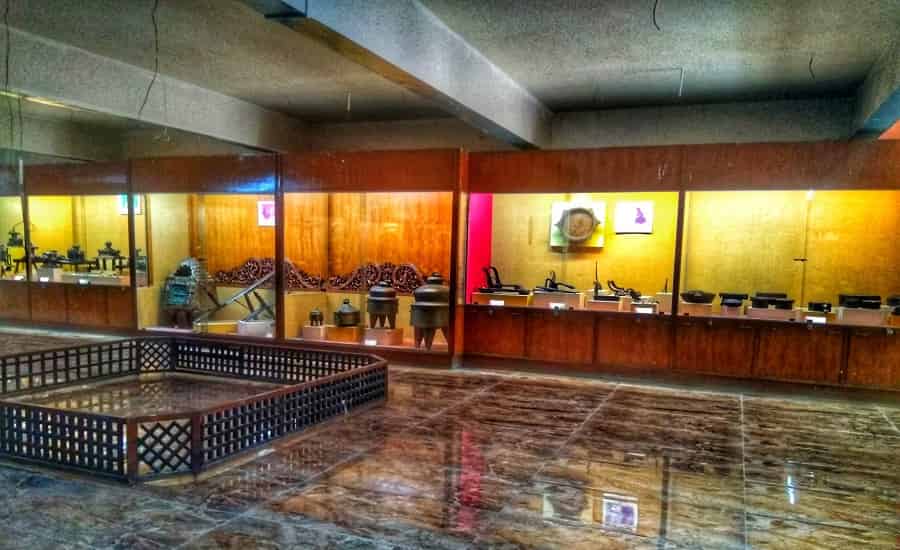
Raja Dinkar Kelkar Museum was the brainchild of D.G. Kelkar and was built in the fond memory his son Raja. The museum houses a vast collection of about 20,000 pieces of artifacts that include paintings, handicrafts, instruments and pieces of earthen ware belonging to different parts of the world. Though built in magnificent Rajasthani style, the soul of the museum reflects Maratha Culture.
Kelkar who was fond of collecting ancient artifacts, made an invaluable contribution in making this museum a storehouse of rare and magnificent pieces of art. His historical endeavor was recognized by Indian government and soon a spectacular museum that had collections of utensils, paintings, sculptures and pieces of metal and stone came into existence. Raja Dinkar Kelkar Museum which started in 1920 soon became a home to more than 15000 art works. Due to its rising popularity and increasing number of artifacts, Kelkar handed over his prized possession to the archeological department of Maharashtra.
Collection Inside the Museum
The connoisseurs of art can see a massive collection of musical instruments, ornaments, hookahs, vessels and other items that find use in day to day life. A cell by the name of Vanita Kakhsa is a parlor storing items of personal use by women. Mastani Mahal is the place where the Mastani, the muse of Baji Rao I, used to live. An idol of Lord Ganesha, with its trunk deviated to the left, is a unique piece of architecture that attracts a tourist owing to its difficult design.
The earthen ware that forms part of Raja Dinkar Kelkar Museum consists of Chinese pots adorned with flowers, animal figures, and birds. The superb skill of Indian artists is behind the marvelous beauty of baked and unbaked pottery. The textiles include embroidered saris with floral and animal motifs; Rabari garments from regions of Gujarat, Parsi garos, clothes form Banaras and Maharashtra. Chitrkathi paintings depicting scenes from Ramayana, miniature paintings of Mughal period, Kalamkari art pieces are some of the masterpieces of Indian artists that decorate the premises.
The ivory section includes chess boards, fragrant sprinklers, cradles, games, and cobs decorated with meena work. Idols of lord Ganesha, elephants and cradles, pen boxes, and musical instruments carved out in ivory are on display. The terracotta items reflecting the tribal population of Madhya Pradesh are the main attraction of this museum. Lamps and smoking pipes belonging to these tribal showcase their life style. The museum has a collection of toys that belong to different centuries. Some of these toys are made up of bronze, copper, paper mache and wood. Whistles declared with motifs, chariots of animals, masks of Gods form major part of toy collection of Raja Dinkar Kelkar Museum.
There are sculptures carved out of sedimentary rocks that are charming to the visitors. Sculptures mostly depict images of Gods and goddesses.
Digitalization of the Museum
In order to do the digital documentation of all the artifacts of the museum, a studio that goes by the name of Kamalnayan was opened. All the modern equipments like laser printers, computers, and digital cameras form part of this studio. Several image editing software like Photoshop, Coral Draw etc are used for digitalization process.
Tribal Museum
- Location: Pune, Maharashtra
- Landmark: Don Bosco Bridge, Queens Road
- Opening Hours: 10.00 in the morning to 5.00 in the evening
- Entry Fee: Nil
- Closing Days: Sunday and other holidays.
- Photography: Allowed if permission is taken
- Category: Culture
- How to reach there: Buses and trains from all major cities are available
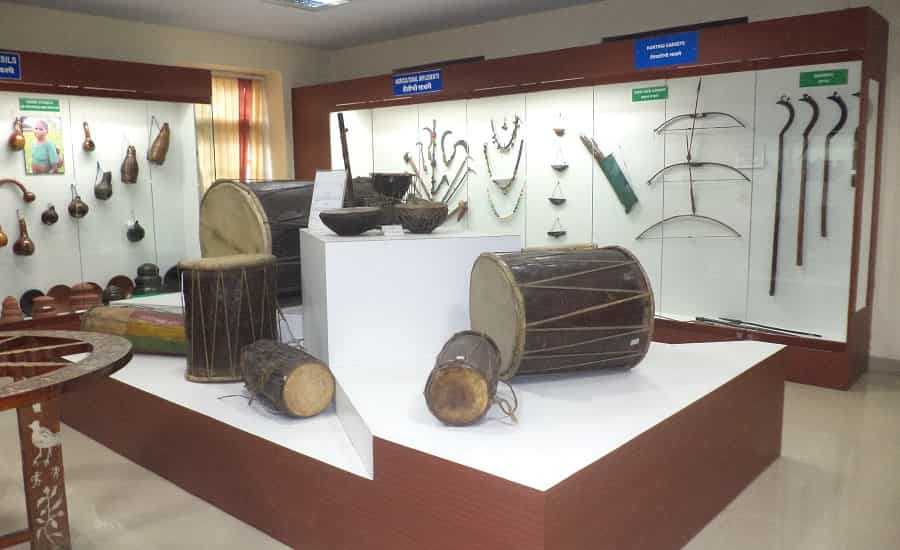
Tribal Museum of Pune is dedicated to the tribal culture of Maharashtra and showcases the lifestyle and traditions of different tribal communities. One can have an insight into the life of these communities belonging to Sahyadri regions. One can have a deep glimpse into the traditional customs and rustic way of living of the tribes that have been known for rich culture and unique history.
Main Attractions of the Museum
Exploring the primordial lives of ethnic tribes can be one of the rejuvenating experiences of one’s life. A visit to the Tribal Museum is the easiest way to have a firsthand experience in knowing different aspects of tribal life. There is a spectacular display of different works of art and craft that have remained part of tribes of Maharashtra since centuries. The experience of exploring these artifacts is a different experience altogether. The museum mainly showcases displays from more than 45 tribes belonging to Gondwana and Sahyadri regions.
Life of several tribes like Danteswari, Bahiram, Wagdheo etc. have been unfolded at the Tribal Museum. Beautiful masks, works of handicrafts, paintings, and sacred images of tribal gods are delightful to watch. Other compilations include utensils, musical instruments, and unique ornaments. These displays emphasize the glory of tribal communities and their important role in contributing towards Indian culture.
There are different galleries categorized according to the artifacts that they display. Due to its uniqueness and presence of rare pieces of art, several provisions have been made to protect and conserve the museum. New pieces of art are added to the catalogue from time to time. This tribal heritage is managed by Tribal Research Institute and allows the visitors appreciate the rich and pristine culture of tribes that is an indispensable part of Indian heritage.
